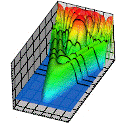Department of Physics and Astronomy: Publications and Other Research
Date of this Version
12-2008
Abstract
The time-dependent effective-range (TDER) theory introduced by Frolov et al. [Phys. Rev. Lett. 91, 053003 (2003)] and used in numerous applications for processes involving a linearly polarized intense laser field is presented in detail for the general problem of an electron, initially bound in a short-range potential, interacting with a laser field of arbitrary polarization. The TDER theory combines the well-known effective-range theory for a weakly bound electron in a short-range potential with the quasistationary, quasienergy state (QQES) or Floquet formulation for an electron interacting with a harmonic, time-dependent field, such as a monochromatic laser field. We present the basic underlying assumptions, the relevant boundary conditions, and the key equations for both the quasienergy ε of the system and its associated, three-dimensional, time-dependent wave function Фε(r, t). The specific equations appropriate for two initial state symmetries (i.e., s- or p-valence electrons) and for three cases of laser field polarization (linear, circular, and elliptical) are derived and discussed. Results of the formulation are presented for the specific case of the Stark shift (and level splitting, in the case of an initially degenerate p state) and detachment rates for H−, O−, the negative alkali-metal ions, and the negative halogen ions.


Comments
Published in PHYSICAL REVIEW A 78:6 (December 2008), 063418. Copyright © 2008 The American Physical Society. Used by permission.